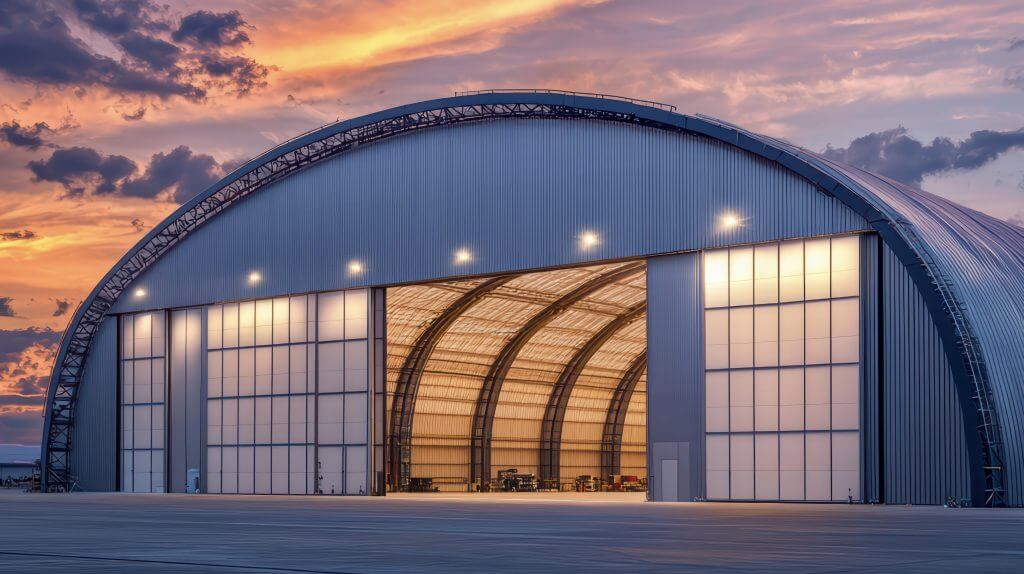When it comes to aircraft ownership, most pilots think about performance, safety, maintenance, and hangar availability. But one factor that often gets overlooked until renewal time is this:
Where you store your aircraft can significantly affect your insurance premium.
Whether your airplane is hangared or tied down can shift how underwriters classify your risk—and that shift could mean hundreds (sometimes thousands) of dollars in premium differences each year.
Let’s break down why storage matters, how underwriters view it, and what you can do to ensure your aircraft is both well protected and properly rated.
Why Insurance Underwriters Care About Storage
Underwriters don’t just rate pilots—they rate aircraft, environments, and risk factors. One of the most fundamental risk factors is how and where the aircraft is stored.
A hangared aircraft is protected from:
- Sun exposure (which can damage avionics, paint, and interior)
- Hail and severe weather
- High winds that can strain tie-downs
- Theft or vandalism
- Wildlife (including birds nesting inside cowling or rodents chewing wiring)
Tied-down aircraft, especially when exposed to open elements and public-access areas, are more vulnerable to these risks.
Even if you’ve never had an issue while tied down, underwriters deal with national risk models—and statistically, the frequency and severity of claims are higher for tied-down aircraft.
That means one change in storage status could push your aircraft into a new risk category—and trigger a much higher rate.
Real Example: The $600 Mistake
A Cessna 182 owner came to BWI for a renewal quote. His previous premium was $1,950.
This year? The same carrier quoted him $2,550.
Why?
Last year, he was hangared. This year, he had to move his aircraft to a tied-down spot due to limited hangar availability.
That one change increased his rate by over $600.
When we shopped the quote across the market, we found another underwriter who still rated him competitively based on location and airport security.
We helped him bind a new policy for $2,175. Still higher than before, but significantly less than his original renewal.
The Variables That Influence Rating
It’s not just “hangar vs. tie-down” as a checkbox. Underwriters ask detailed questions, such as:
- Is the tied-down area fenced or monitored?
- Is there a locked gate?
- Is the tie-down on asphalt, grass, or gravel?
- How far is the aircraft from other parked planes?
- Is there storm drainage? Nearby tree coverage?
- Are tie-down points secure and regularly inspected?
The more you can communicate the specifics of your storage environment, the better chance you have of getting a fair quote.
What You Can Do as an Aircraft Owner
1. Document your storage setup.
Take photos of your hangar or tie-down. Note security features, airport fencing, lighting, and signage.
2. Inform your broker of any changes.
If you move from hangar to tie-down (or vice versa), notify your broker immediately. The sooner we update your profile, the sooner we can shop for savings.
3. Explore hangar alternatives.
Even a shared hangar or semi-covered structure can improve your rating. Some underwriters offer intermediate pricing for these solutions.
4. Ask your broker to resubmit your application.
Not all carriers treat storage changes equally. What disqualifies you with one underwriter may not matter to another.
5. Avoid surprises at renewal.
Storage changes can feel harmless in the moment, but they’ll almost always surface at renewal time. Planning ahead helps avoid rate shock.
What Happens if You Move Storage Mid-Term?
Let’s say you’re halfway through your policy period and you move from a hangar to a tie-down. Are you required to report it?
Yes.
Failure to disclose material changes in storage could jeopardize your coverage—or create grounds for denial in the event of a claim.
It may not always increase your premium mid-term, but it’s essential to notify your broker so the insurer is aware.
Why BWI Handles Storage Differently
At BWI, we know that storage isn’t always a choice. Sometimes hangars are full. Sometimes you’re in a rural area with limited options.
That’s why we:
- Take time to document your situation thoroughly
- Submit your risk profile to multiple underwriters
- Leverage our relationships to advocate for competitive rates even in tied-down situations
We don’t treat tied-down aircraft as second-class citizens. We treat your policy like it’s our own.
Final Takeaway
Hangaring your aircraft is often the best-case scenario for protection and pricing—but not always possible.
If you’re tied down, the key is to proactively manage the narrative. Show the underwriter your storage conditions, emphasize safety features, and work with a broker who can shop your quote across the aviation market.
One small change in your storage situation can lead to a big change in your premium.
Let’s make sure it doesn’t happen to you.
[Get a Free Aircraft Storage Review from BWI Today]
Continue Reading



